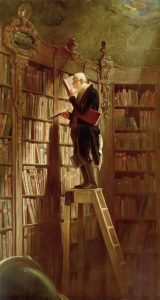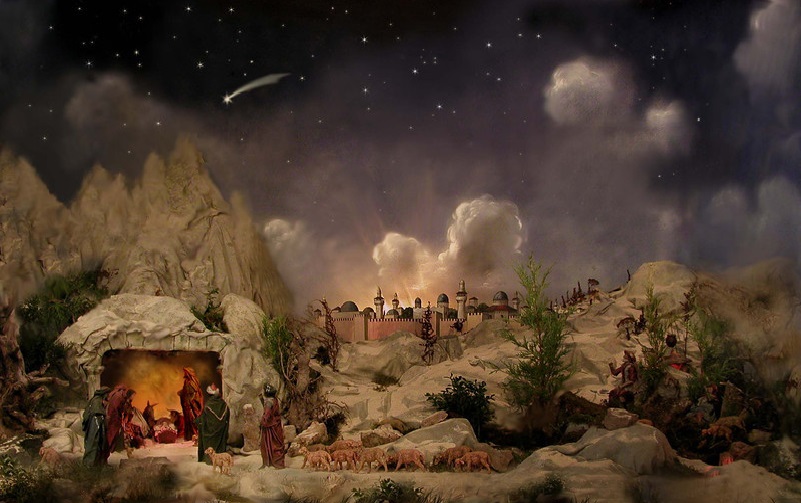The song ‘Silent Night’ is by far the most symbolic of Christmas carols. It is understandable, then, that we might wonder about the origin of such an extraordinary song.
To tell the story of its origins we must start at the court of Frederick William of Prussia, the fourth king of that name, just after his ascension to the throne in 1840.
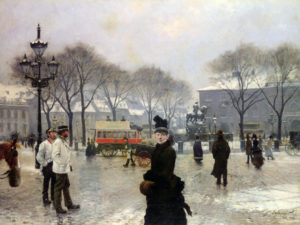
It was Christmas Eve. In Berlin, the King and his court were commemorating the birth of Christ. The Cathedral choir, directed by Felix Mendelsohn, was playing one of the pieces from his repertoire. It was the song ‘Silent Night’.
The King was very impressed by the beautiful song and wondered who the author might be. He examined his program with the list of the hymns being sung and was surprised to see that the author was unknown. The King of Prussia could not permit such imprecision.
So immediately after the ceremony, he had the director come to see him. However, Mendelsohn was not able to shed any light on the matter. He then called the Head of Royal Concerts, Ludwig, who had the reputation of being able to discover the origin of unknown songs. But to Frederick William’s disappointment he knew nothing either.
So the king then ordered Ludwig to find out, because Prussian hymn books had to be in proper order!
Now that Ludwig had his reputation on the line, it was imperative that he discover who the composer of the song was. He scoured the libraries, cities, principalities, and kingdoms of what was then Germany. But all to no avail.
‘The Song Hunter’, as they started to call Ludwig, noticed that the style of the music seemed Austrian. So off he went to Vienna. But again drew a blank.
However, an old musician from Haydn’s day gave him a clue. Michael Haydn, the brother of the famous musician, composed many works that had been lost. ‘Could this Christmas song perhaps be one of those?’ the old man suggested. It was a long shot, and Ludwig wasn’t encouraged. So giving up his search he decided to return to Court.
During the return trip, while he was staying at an inn, he noticed a cage-bird singing a familiar song. He leapt to his feet startled.
Ludwig realised the bird was singing that mysterious Christmas song whose author he was looking for; it was singing ‘Silent Night’!
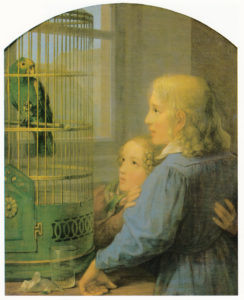 “What happened?” the innkeeper asked.
“What happened?” the innkeeper asked.
“The bird, ” answered Ludwig. “Who taught the bird that song?”
The innkeeper did not know. But he added that a friend of his had bought it at the abbey at Salzburg and left it at the inn for the entertainment of guests.
The Abbey of Salzburg! Ludwig suddenly felt like a hunter, who after much fruitless searching, finds fresh tracks in the snow. The trail had become warm again!
He knew that Michael Haydn had lived for quite a long time at that abbey. So it was almost certain that the song was Michael Haydn’s. Ludwig lost little time changing his travel plans and making his way to the abbey.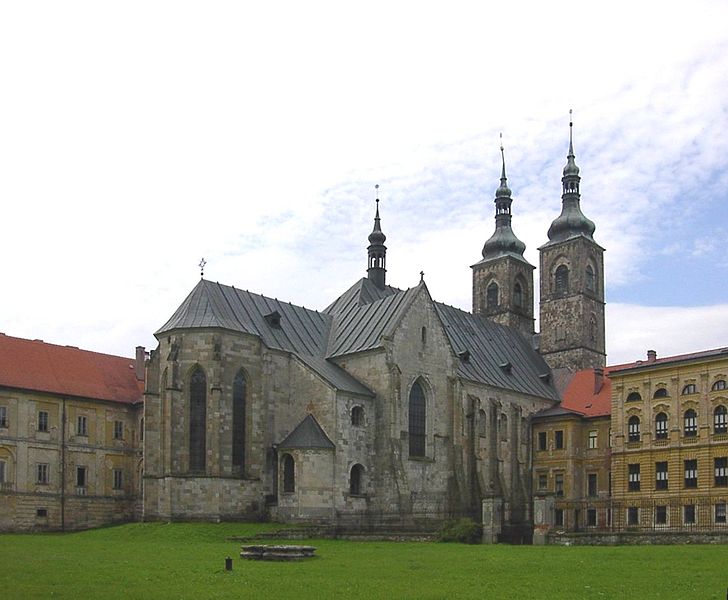
Upon arrival, the head of royal concerts of the Prussian court was received with all the honours due to his office. The abbot and the monks offered him a good dinner and comfortable lodgings.
But, lamentably, nobody knew the origin of the song. They much doubted the author had been Michael Haydn.
When the ‘Song Hunter’ told them about the cage-bird, suggesting that the monks had taught it to sing that song, the abbot was offended because such antics were prohibited in the monastery.
Ludwig then examined all the manuscripts of Michael Haydn in the room where he had worked. And just as the monks had foretold, he found nothing. The trail was again gone cold. Discouraged, Ludwig began his journey back to the Prussian Court.
[like url=https://www.facebook.com/ReturnToOrder.org]
However by chance, among those participating in the dinner offered by the Abbot, there was a school teacher called Ambrosio Prestainer, who was especially interested in the story of the bird.
“This could have been done by one of the boys in the abbey choir,” he mused.
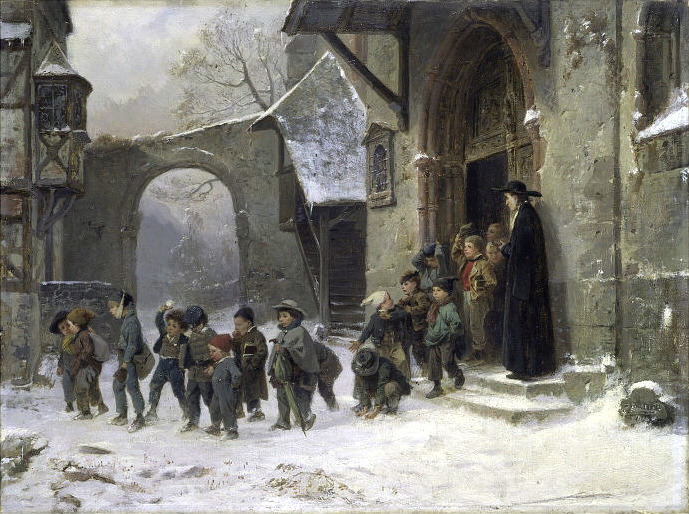 Now since the school teacher could imitate the bird perfectly, he decided to try out something in order to discover who had taught the bird this song. A few days later he placed himself by a window that opened onto the inner courtyard of the school. He whistled, imitating the bird singing ‘Silent Night’.
Now since the school teacher could imitate the bird perfectly, he decided to try out something in order to discover who had taught the bird this song. A few days later he placed himself by a window that opened onto the inner courtyard of the school. He whistled, imitating the bird singing ‘Silent Night’.
His ruse worked, because he soon heard a boy’s voice saying: “So little bird, you’re back!” and a nine-year-old boy came running out of class. How surprised the boy was to see he had fallen into a trap!
“What is your name?” the teacher asked.
“Felix Gruber,” the boy answered.
“And tell me Felix, where did you learn that song?”
“My father taught it to me.”
“And where did he get it?”
“He composed it, sir.”
Without losing a minute Prestainer went to the boy’s house in a nearby village. There he met the local school teacher, Franz Gruber, who said he had in fact composed the music, but the lyrics had been written by his friend Fr. Josef Mohr, parish priest of the village of Bagran, who had recently died.
Overjoyed at finally finding the song’s origin, Prestainer wrote to Ludwig ‘The Song Hunter’, telling him his quest to find the origins of the song were over. He sent Ludwig a full written account of how the song came about. And this is what he told him:
It is Christmas Eve, and the tower of the small church of the village dominates the snow-laden houses of the town like a hen protecting its chicks. In the presbytery the young Fr. Josef Mohr, twenty-six years old, is reviewing the Gospel in preparation for that night’s ceremonies when a knock at the door breaks the silence. It is a peasant woman who asks the parish priest to help a baby that has just been born.
Without delaying, the priest leaves the comfort of his home and, after a hard climb up the mountain, arrives at the humble abode where the child has been born. Upon his return the stars shine in the heavens reflecting their light on the whiteness of the snow.
He begins to reflect on the scene he has just witnessed. The child, the peasant couple, and their humble home, have all impressed him. They remind him of another child, another couple, another humble dwelling in Bethlehem of Judah.
After midnight Mass Fr. Mohr is unable to sleep. He takes pen and paper and begins to write a poem that will become the lyrics to the song ‘Silent Night’.
The next morning, Christmas Day 1818, the pious priest looks for a friend of his called Franz Gruber, then 31-years-old. After reading the poem, Gruber exclaims:
‘Father, this is exactly the Christmas song that we needed! Praised be to God!’ And that very day he composes the music to go with the words.
What Does Saint Thomas Say About Immigration?
In this simple and way, mirroring the events at Bethlehem, the most popular and beautiful Christmas song of all time was born.
END



